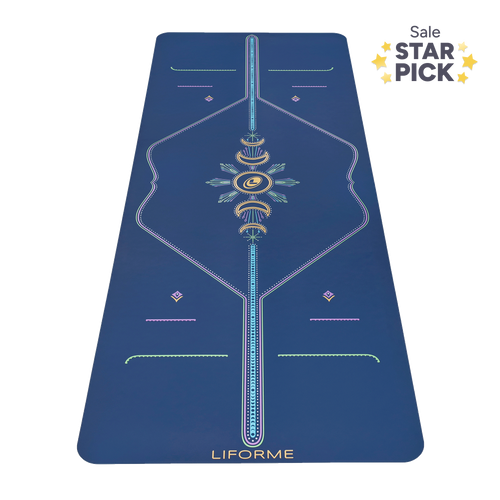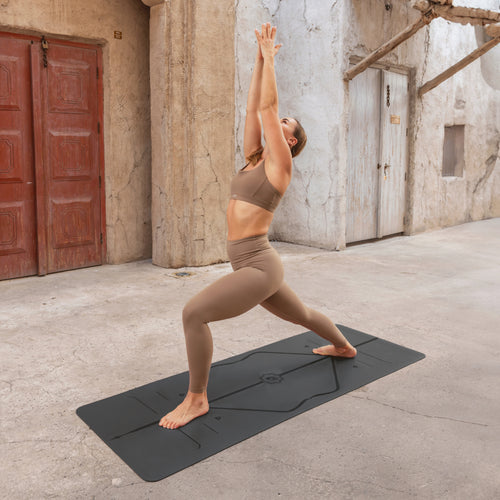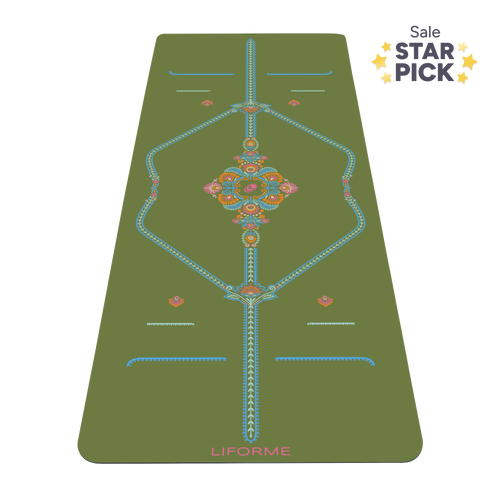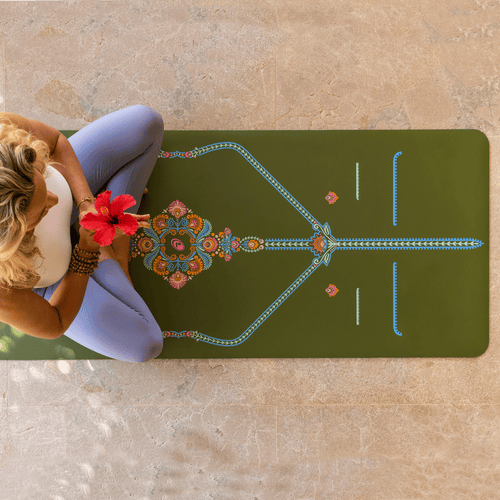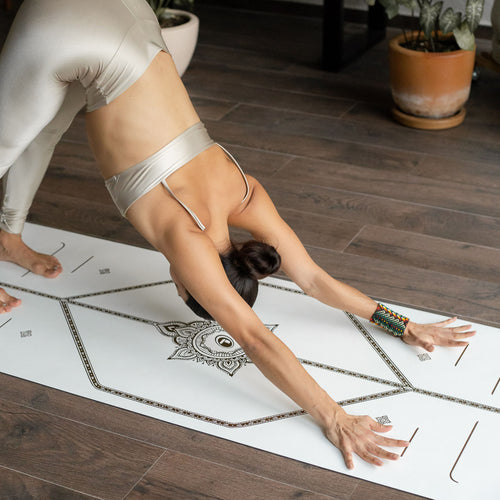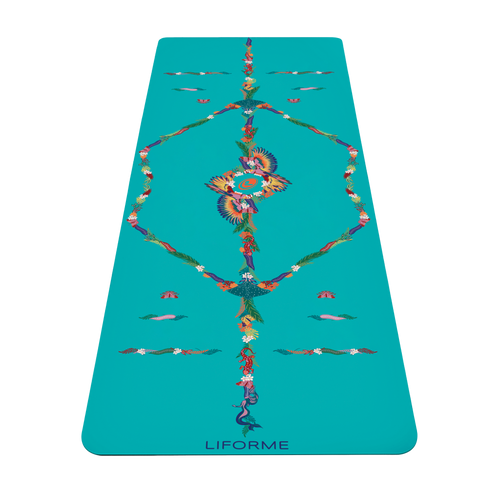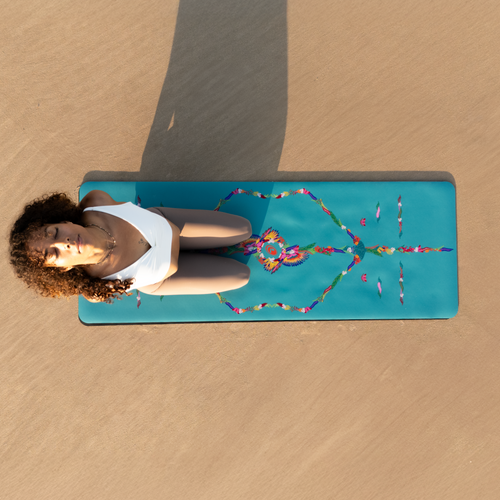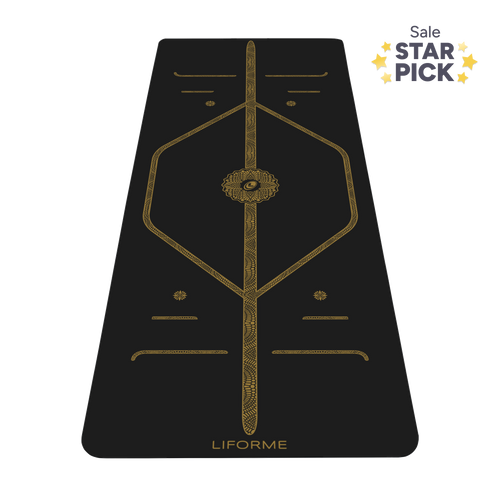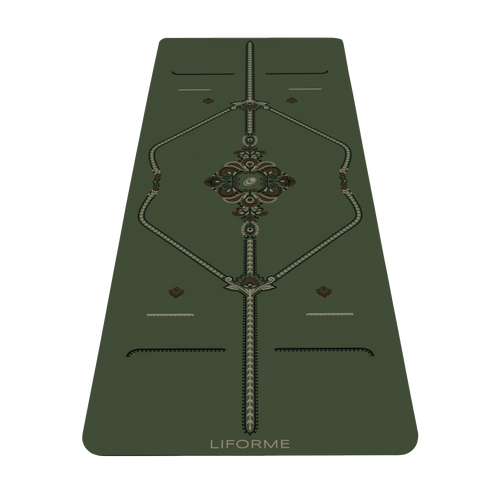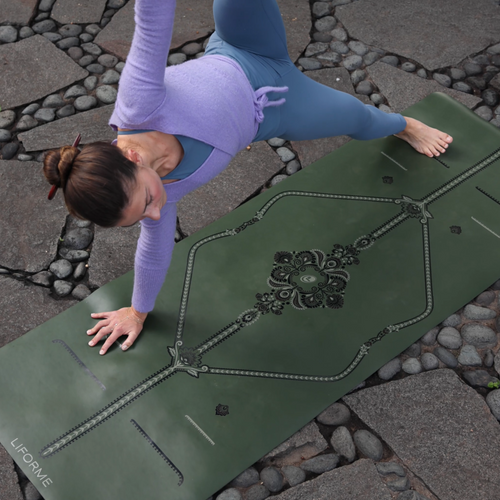If you love yoga, it’s only natural to want to share the practice with your kids. When they’re young, they may enjoy simply being around you as you practice and may even follow along if you give them a little mat that’s all theirs…
Strategically place some Lego nearby and you can even extend your own session a bit!
Your older children, who have seen you on your mat time and again, may even be ready to join your practice with a little more guidance.
Why Is Yoga Beneficial for Children?
Yoga for children offers many of the same benefits adults experience - plus some extra perks for growing bodies and minds.
As all parents know, any type of movement helps kids get the wiggles out and can change their moods from grumpy to sunny in the blink of a quick lap around the park. Learning calming practices like deep breathing and stretching also helps kids in their journey toward self-soothing.
Additionally, improved body awareness is a major benefit, especially for older children. Many kids struggle with understanding where their body is in space. Following alignment instructions helps strengthen the mind-body connection.
Beyond the physical benefits, yoga for children also supports mental health by reducing anxiety and improving focus. Simple breathing exercises and mindful movement encourage a sense of calm and foster relaxation.
Finally, family yoga time can be a bonding experience. Just make sure you’re not attached to any particular outcome to keep things low-key and fun!
Children - especially younger ones - may have short attention spans, so being flexible with the practice and allowing them to make their own choices will help them engage more fully.
16 Best Yoga Poses for Children
Animal Poses
Most kids love animals, so these poses are an ideal playful way to introduce them to children’s yoga. Many of these yoga poses imitate animals’ natural movements, helping kids build strength, flexibility, and imagination!

Dog Pose
A full-body stretch that also builds arm strength.
- Come to your hands and knees.
- Tuck your toes under.
- Straighten your legs and lift your hips toward the sky.
- Let your head hang loose.

Scaredy Cat Pose
A great way to work out backaches, ease tension, and learn how to move the spine.
- Come to your hands and knees
- Round your back and push the middle of your spine up toward the sky.

Snake Pose
A gentle stretch for the lower back, this pose is great after long periods of sitting in the car or at school.
- Lie down on your belly.
- Bend your elbows and bring your hands flat on either side of your shoulders.
- Press into your hands to lift your chest and straighten your arms a little or a lot.

Frog Pose
Squatting is a good way to maintain hip mobility.
- Stand at the front of your mat with your feet hip-width apart on the wiggly lines.
- Bend your knees and sit almost all the way down.
- Try to keep your bum off the floor if you can.
Nature Poses

Crescent Moon Pose
A wonderful way to stretch the sides of the body.
- Stand at the front of your mat with your arms overhead.
- Press your palms together
- Take both hands to the right while your hips go left.
- Come back to the centre and do the other side.
Star Pose
Activating the hands and feet creates whole-body awareness.
- Stand facing the side of your mat with your legs wide apart.
- Stretch your arms up to form an X shape.
- Spread your fingers and make your hands bright.

Tree Pose
A balance challenge that improves concentration and strengthens the core.
- Stand at the front of your mat with your feet together.
- Lift one foot off the floor and place the sole of that foot on the inside of your other leg.
- You can use your hands to help place your foot above your knee if you want.
- It’s ok if you wobble or fall. Trees sway in the wind all the time!
- Put your foot down and try the other side.
Thunderbolt Pose
A fun way to open the hips.
- Kneel with the tops of your feet and shins flat on your mat and your bum sitting on your heels.
- Shift your bum to the right so it sits flat on the mat.
- Slide the sole of your right foot to the inside of your left leg.
Poses That Look Like Things
These playful poses resemble everyday objects, making them fun and engaging for kids!

Table Pose
Starting to work with basic alignment cues builds body awareness.
- Come to a hands-and-knees position
- Make sure your wrists are lined up under your shoulder and your knees are under your hips. That makes the table legs straight.

Bridge Pose
A gentle first backbend that strengthens the back and legs.
- Lie down on your back with your knees bent and pointing up to the ceiling.
- Bring your arms alongside your body.
- Press into your feet to lift your bum off the floor, making an arched shape with your back.

Plank Pose
A great pose to strengthen the core and arms.
- Come onto your hands and knees with your toes tucked under.
- Stretch one leg straight behind you, so that foot is at the back end of your mat with your toes still tucked under.
- Do the same thing with your other leg
- Don’t let your bum stick up or drop down.

Boat Pose
A challenging posture that improves core strength and balance.
- Sit on your mat with your feet flat on the floor and your knees bent and pointing up to the sky.
- Put your hands onto the mat on either side of your bum.
- Lean your upper body back a little bit.
- Lift your feet off the floor. Bring your shins in line with your knees if you can.
- No floppy feet!
- Ready for a challenge? What happens if you lift your hands off the floor?
Calming Poses

Hang Loose Pose
A floppy pose that teaches how to relax the body and let go.
- Stand at the front of your mat with your feet separated a little.
- Forward bend like you’re going to touch your toes, but you don’t have to touch them.
- Let your arms and head hang loose.
- Wiggle them around a bit if it feels good.

Belly Ache Pose
This one really works!
- Lie on your back.
- Hug your knees tightly into your chest.
- Rock a little from side to side if you like.
- It’s okay if a little fart escapes.

Legs Up The Wall Pose
A very mild and calming first inversion.
- Bring your mat over to a blank space on your wall.
- Lie down on your back with your bum close to the wall.
- Take your legs straight up the wall with the soles of your feet facing the sky.
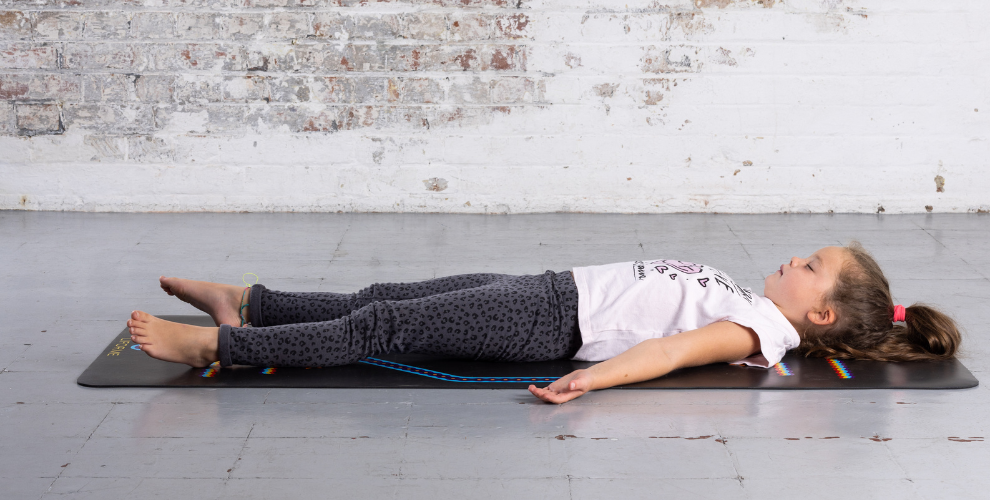
Deep Rest Pose
Learning to relax and take deep breaths is perhaps the most important pose of all.
- Lie on your back with your hands by your sides.
- Turn your palms to face the sky.
- Let your feet open out to either side.
- Close your eyes.
- Relax your body by taking at least 10 deep breaths.
What’s the Best Age to Start Yoga for Kids?

Since there’s a big difference between a toddler and a tween, it makes sense to approach their yoga time differently. Every kid is different, so use any of these methods that work for your child, no matter their age.
Side By Side (Ages 1-5)
If you’ve ever tried to do yoga at home with young kids, you know they’re not inclined to leave you undisturbed while you get in a 30-minute (or even a 10-minute) practice. Our children love to be close to us, especially when we’re trying to do something else!
However, kids also love to have their own version of grown-up things, hence the popularity of mini kitchens, mini laptops, and mini prams.
While we can’t promise that having their very-own-super-special-just-like-mommy’s yoga mat will keep them off yours, it should buy you enough time for a Down Dog or two.
Whether they like to imitate your movements or you set them up with some toys to play nearby, they will enjoy having their own fun kids’ yoga mat!
Basic Yoga Instruction (Ages 4-10)
When your kids get a bit older, you can start to teach them basic poses and plant the seeds of good alignment habits. Since most children are visual learners, putting their “hands on the stars” or “feet on the hearts” will appeal to them.
They may also want to use their mat for imaginative play - whether that means leading their own class for stuffies or making up new poses to teach you. Ending yoga playtime with a mini Savasana helps them begin to associate their mat with feelings of calmness and relaxation.
Independent Yoga Play (Ages 7-10)
Older kids may start to initiate their own yoga explorations once they have the tools to do so. While you can’t make your kids love yoga, you can show them that yoga is an important part of your life because it helps you self-regulate and feel better.
By providing time, space and encouragement, you can give children the opportunity to develop their own connection to the practice - one that may stay with them as they grow.
Children Yoga FAQs
How long should a children’s yoga session last?
That depends on the child’s age and attention span. For younger children, 5-10 minutes is a good starting point. Older kids can engage for 15-20 minutes or more, especially if the session includes a mix of movement, storytelling, and relaxation.
However, keeping it fun and lighthearted is more important than sticking to a strict time frame.
Can yoga help my child with stress and anxiety?
Yes! Yoga can be a great tool for helping children manage stress, anxiety, and overall mental health. Breathing exercises, gentle stretching and calming poses like Legs Up the Wall or Deep Rest encourage relaxation and mindfulness.
Practicing regularly can help children develop coping strategies for healthily handling emotions.
Do kids need special clothes for yoga?
No special yoga clothes for kids are required! As long as they wear comfy, stretchy clothing that allows them to move freely, they’ll be good to go.
Leggings, shorts, or sweatpants with a T-shirt or tank top work great. Bare feet help with grip and will allow them to feel more grounded.






